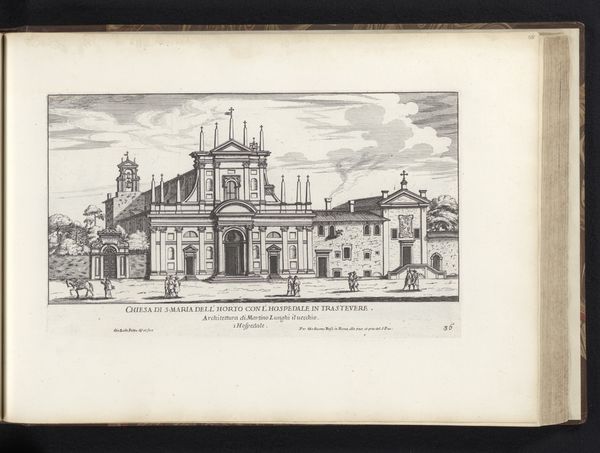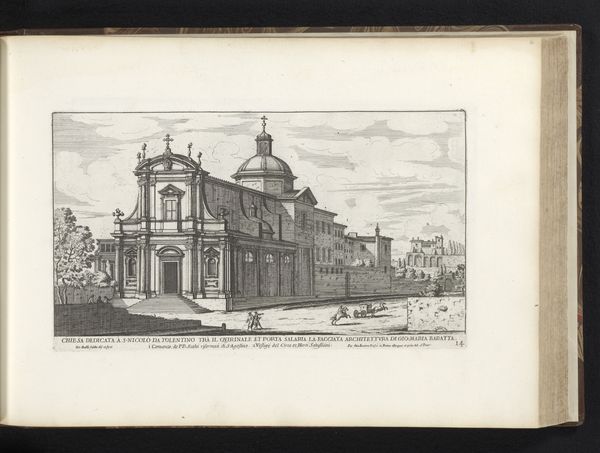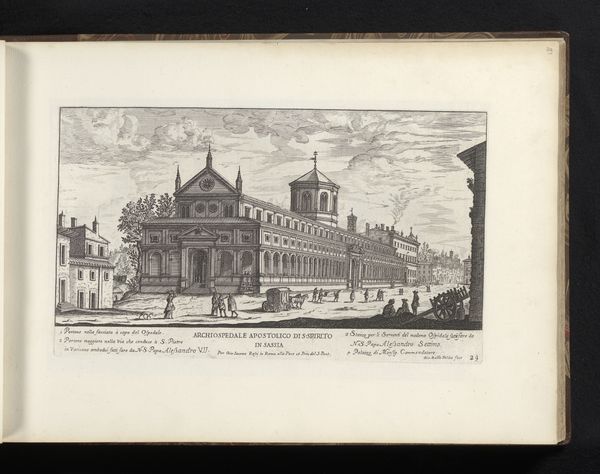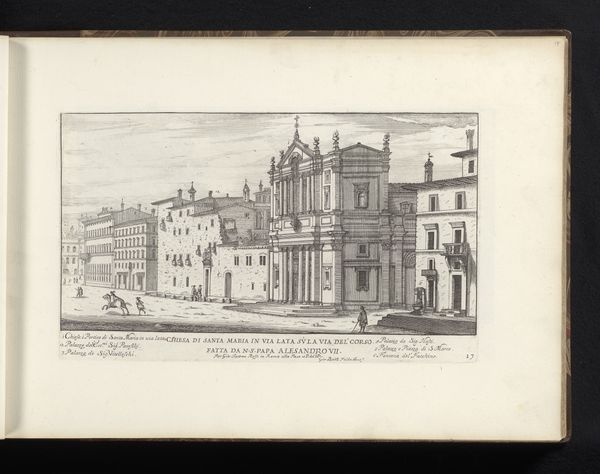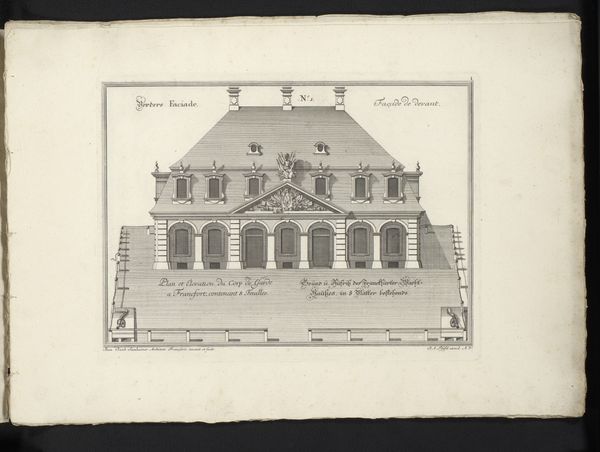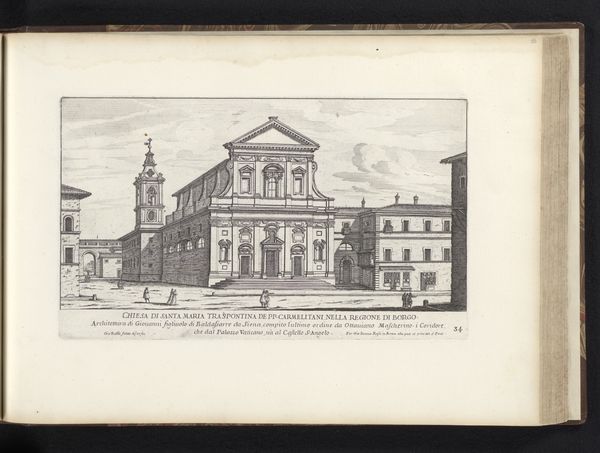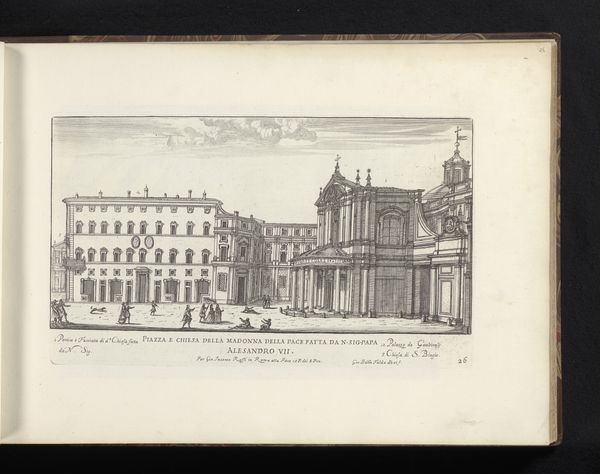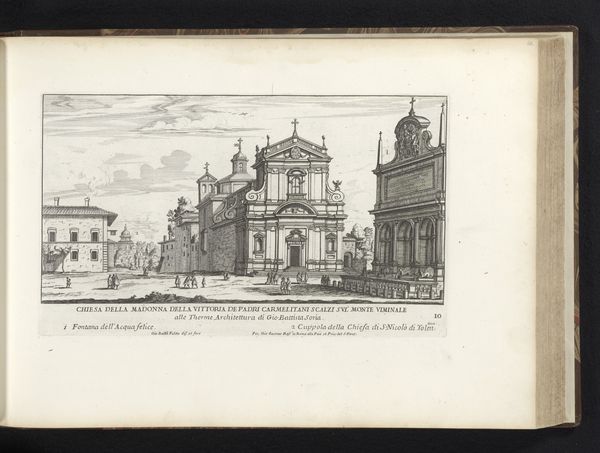
print, engraving, architecture
#
aged paper
#
toned paper
#
baroque
#
mechanical pen drawing
# print
#
old engraving style
#
sketch book
#
personal sketchbook
#
pen-ink sketch
#
pen and pencil
#
pen work
#
sketchbook drawing
#
cityscape
#
engraving
#
architecture
Dimensions: height 172 mm, width 287 mm
Copyright: Rijks Museum: Open Domain
Giovanni Battista Falda's etching, 'Santa Susanna te Rome,' captures the facade of the Roman church, likely dating to the late 17th century. But more than just a rendering of stone and structure, this print offers a window into the social and institutional landscape of the time. Falda's Rome was a city of grand projects, where the Church sought to assert its power through impressive displays of architecture. Prints like these played a crucial role in disseminating these visual symbols of authority. Note how Falda meticulously details the architectural elements, emphasizing the church's imposing presence. The Church of Santa Susanna wasn’t just a place of worship; it was a statement of the Catholic faith. To truly understand Falda's print, we can consult period maps, architectural treatises, and even Papal records. These sources reveal the complex interplay of religious ambition, artistic patronage, and urban planning that shaped Rome, and the image’s significance to the period.
Comments
No comments
Be the first to comment and join the conversation on the ultimate creative platform.
